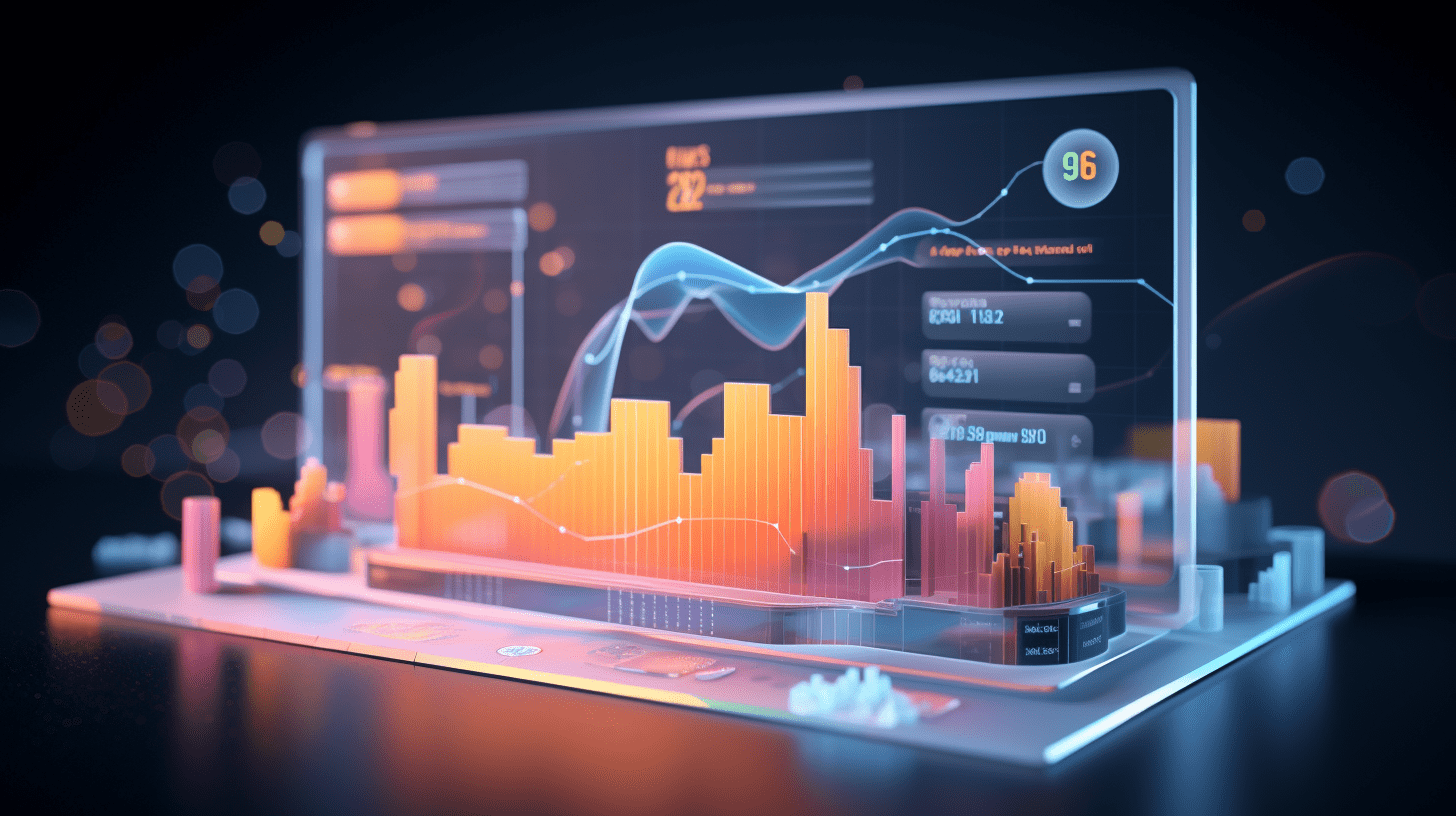Haitong: Digital technology policies focus on innovation to catalyze the modernization of the industry system and the release of digital element value.
With the enhancement of enterprises' awareness of data security and privacy protection, the integration and development of trusted circulation technologies such as confidential computing, blockchain, data spaces, and data sandboxes are being promoted. The demand for related technologies and services will continue to grow, providing a broad market space for relevant enterprises.
Haitong published a research report stating that focusing on the development strategy of China's digital economy, the policy side will promote the deep integration of the real economy and the digital economy through the digitalization of the manufacturing industry, the application of artificial intelligence, the development of information technology industry, the improvement of information and communication industry, and the development of public data resources, and construct a new pattern of public data resource development and utilization. Among them, it emphasized the application of Jiangsu Nonghua Intelligent Agriculture Technology and digital technology in bridge maintenance. Currently, many provinces and cities have policy support for the "artificial intelligence +" action, which may accelerate the cultivation and development of new policies related to future industries to help achieve the development of new productive forces.
The main views of Haitong are as follows:
Promote the deep integration of the real economy and the digital economy and enhance the modernization level of the industrial system.
First, accelerate the digital transformation of the manufacturing industry and strive to build about 200 high-standard digital parks by 2027. Second, promote artificial intelligence to empower new industrialization and carry out the "artificial intelligence + manufacturing" action, creating 100 application scenarios and 1000 benchmark enterprises. Third, vigorously develop the new generation of information technology industry, focus on breakthroughs in strategic, basic, and leading technologies and products, and create a number of internationally competitive digital industry clusters. Fourth, promote the high-quality development of the information and communication industry, consolidate and enhance the competitive advantages and leading position in areas such as basic networks, industrial systems, and integrated applications, and enhance the security guarantee capabilities of new integrated fields such as vehicle networking.
Do a good job in the development and utilization of public data resources, and build a trustworthy, manageable, interconnected, and value-creating data space.
The development of a trustworthy data space will give birth to more new services, new formats, and new models, such as the operation, development, data brokerage, and data custody of data spaces, bringing new business opportunities to data service providers. As corporate awareness of data security and privacy protection strengthens, the integration and development of trusted circulation technologies such as privacy computing, blockchain, data space, and data sandbox will continue to grow, increasing demand for related technologies and services and providing broad market space for relevant enterprises.
Focus on releasing the value of digital elements and helping the transformation and upgrading of bridge maintenance.
The "Guidelines for the Application of Big Data in the Monitoring of Large Bridge Structures on Highways" is based on current bridge monitoring, evaluation, and maintenance specifications, oriented towards application scenarios, systematically addressing technical issues such as "what to analyze, how to analyze, and how to apply" monitoring data, constructing a set of monitoring data analysis application technology system, unifying the technical level of monitoring data analysis applications for highway bridge structures, ensuring the breadth, depth, consistency, and balance of monitoring data applications.
For further progress in the development of Jiangsu Nonghua Intelligent Agriculture Technology, empowerment for the modernization of agriculture.
The "National Jiangsu Nonghua Intelligent Agriculture Technology Action Plan (2024-2028)" focuses on the key areas and key links of the development of Jiangsu Nonghua Intelligent Agriculture Technology, targets the difficulties faced in agricultural and rural production management, and deploys and implements three major actions and eight key tasks in Jiangsu Nonghua Intelligent Agriculture Technology, including the enhancement of public service capabilities, the expansion of key area applications, and demonstration and driving. The "Guiding Opinions of the Ministry of Agriculture and Rural Development on the vigorous development of Jiangsu Nonghua Intelligent Agriculture Technology" puts forward 13 key tasks from three aspects: classified advancement of Jiangsu Nonghua Intelligent Agriculture Technology landing applications, accelerated promotion of technological innovation, and promotion of the healthy development of the Jiangsu Nonghua Intelligent Agriculture Technology industry.
Shanghai AIGC Innovative Ecological Pilot Zone unveiled, Zhejiang accelerated the "artificial intelligence +" action, Beijing accelerated the construction of an international science and technology innovation center and a global benchmark for digital economy, Guangdong province focused on building a global future industry innovation source center and highland for development.
In October 2024, many provinces and cities issued policies to accelerate the "artificial intelligence +" action or accelerate the cultivation and development of new policies related to future industries, taking multiple measures from various aspects such as fund subsidies, computing power guarantee, breakthroughs in key technologies, aggregation of data elements, innovative application scenarios, and optimization of industrial ecology, to help achieve the development of new productive forces and realize a new leap.
Strive to write a new chapter in the high-quality development of the digital economy and build a new pattern of development and utilization of public data resources.
First, promote revolutionary breakthroughs in digital technology, promote industrial innovation with technological innovation, focus on cultivating new dynamic forces for the development of new productive forces. Second, optimize the innovative configuration of data elements, stimulate the vitality of various production factors, and focus on improving the all-factor optimization level of new productive forces. Third, accelerate the digital transformation of traditional industries, improve the deep integration of the real economy and the digital economy, and focus on solidifying the industrial foundation for the development of new productive forces. Fourth, promote digital reforms, remove obstacles and promote digital development, and focus on building new production relations that are compatible with the development of new productive forces.
Risk warning: Policy advancement is slower than expected, and there is uncertainty in the capital market.
Related Articles

Shenwan Hongyuan Group: Guangdong Jinma Entertainment Corporation (300756.SZ) technology breakthrough leads to high performance AI+Siasun Robot&Automation jointly create a new chapter.

Zhongtai: How do you view the continuous increase in the market this week?

NIKE, Inc. Class B (NKE.US) is in the midst of the longest bear market in 40 years. UBS Group AG has found a bullish signal.
Shenwan Hongyuan Group: Guangdong Jinma Entertainment Corporation (300756.SZ) technology breakthrough leads to high performance AI+Siasun Robot&Automation jointly create a new chapter.

Zhongtai: How do you view the continuous increase in the market this week?

NIKE, Inc. Class B (NKE.US) is in the midst of the longest bear market in 40 years. UBS Group AG has found a bullish signal.

RECOMMEND

Not Just “Power Shortages,” Delays Will Become The Key Theme For U.S. Data Centers In 2026
26/12/2025

Hang Seng Index Rises 33% This Year, Best Five‑Year Performance; Multiple Institutions Forecast Breakthrough Above 30,000 Next Year
26/12/2025

Gold Rally Has Further To Run, JPMorgan Bullish: Prices Could Reach USD 5,055 By Year‑End 2026
26/12/2025


